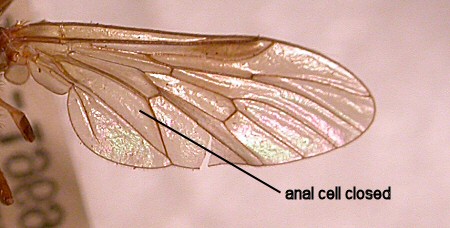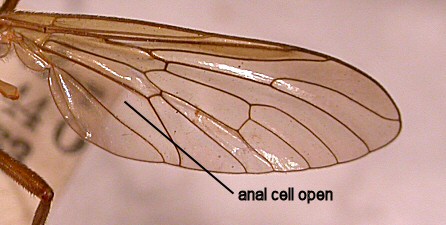
Mark van Veen

Mark van Veen
The keys and information are based on
1.b. Antenna: 3rd segment gradually tapering from base to tip, not kidney-shaped, the arista implanted on or close to the tip -> 4
2.a. Tibia 3 with 2 spurs at the apex; wings with dark markings and/or a dark pterostigma -> 3
2.b. Tibia 3 with 1 spur at the apex; wings entirely clear, pterostigma very pale -> Symphoromyia
3.a. Genae bare, in NW-Europe small (5-7mm) species -> Atrichops
3.b. Genae densily haired, in NW-Europa larger (7-10mm) species -> Atherix
4.a. Wing: anal cell closed -> 5
4.b. Wing: anal cell open -> Rhagio


Above, left: wing of Chrysopilus with anal cell closed, below, right: wing of Rhagio with anal cell open.
5.a. Length less than 5 mm; arista at most as long as the antenna itself -> 6
5.b. Length more than 5 mm; arista more than twice the length of the antenna -> Chrysopilus
6.a. Wing: 4th vein (counted along the hind border, starting from the wing base) does not reach the hind border of the wing; very small: 2-2.5 mm; arista arises beyond the tip of the 3rd antennal segment -> Spania
6.b. Wing: 4th vein reaches the hind border of the wing; longer: 3.5 - 5 mm; arista arises from the tip of the 3rd antennal segment -> Ptiolina
Last updated 24.5.2008